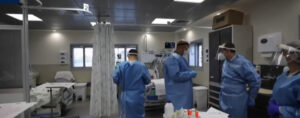欧州の医学部入試問題を実際に解く:生物・化学の問題と解説 ⑸

はじめに
生物学は、医学部を目指す学生にとって重要な科目であり、特にヨーロッパ諸国では入試で主要な生物学的プロセスが重視される傾向があります。その中でも最も重要なトピックの一つが「光合成」です。本ブログでは、ヨーロッパの医学部入試における光合成の実践問題を掲載・解説し、近年の傾向や主要なテーマ、そして合格に向けた学習アドバイスを紹介します。

実践問題
Multiple Choice Questions on Photosynthesis: Answers and Explanations
Question 1
Besides the manufacture of food for plants, what is another benefit of photosynthesis?
- a) It produces solar energy.
- b) It diffuses additional carbon dioxide into the air.
- c) It maintains a balance of gases in the atmosphere.
- d) It removes harmful gases from the air.
Question 2
Which of the following is NOT true of the oxygen used in photosynthesis?
- a) Oxygen is absorbed by the roots.
- b) Oxygen is the product of photosynthesis.
- c) Oxygen is used in respiration.
- d) Oxygen is released into the atmosphere through the leaves.
問題の解答解説(英語&日本語)
Question 1
Correct Answer: c) It maintains a balance of gases in the atmosphere.
While photosynthesis primarily produces food (glucose) for plants, it also plays a crucial role in maintaining the balance of gases in Earth’s atmosphere. During photosynthesis, plants absorb carbon dioxide and release oxygen as a byproduct. This process counterbalances the oxygen consumption and carbon dioxide production that occurs during respiration in both plants and animals.
- Option a) is incorrect because photosynthesis doesn’t produce solar energy; rather, it converts solar energy into chemical energy stored in glucose.
- Option b) is incorrect because photosynthesis actually removes carbon dioxide from the air, not diffuses it into the air.
- Option d) is partially true but too specific—photosynthesis does remove carbon dioxide (which can be harmful in excess), but maintaining gas balance is the broader benefit.
Question 1 – 日本語での解説
正解: c)
光合成は主に植物の食物(グルコース)を生産する一方で、地球の大気中のガスバランスを維持する上で重要な役割を果たしています。光合成の過程で、植物は二酸化炭素を吸収し、副産物として酸素を放出します。このプロセスは、植物と動物の両方の呼吸中に起こる酸素消費と二酸化炭素生産のバランスを取ります。
- 選択肢a)は不正解です。光合成は太陽エネルギーを生産するのではなく、太陽エネルギーを化学エネルギーに変換してグルコースに蓄えるからです。
- 選択肢b)は不正解です。光合成は実際には二酸化炭素を空気に拡散するのではなく、空気から除去するからです。
- 選択肢d)は部分的に正しいですが、非常に限定的です。光合成は確かに(過剰な場合に有害となりうる)二酸化炭素を除去しますが、ガスバランスの維持はより広範な利点です。
Question 2
Correct Answer: a) Oxygen is absorbed by the roots.
This statement is NOT true of oxygen in relation to photosynthesis. Plants do not absorb oxygen through their roots for photosynthesis. Instead, they absorb carbon dioxide through small pores called stomata, primarily located on the leaves.
- Option b) is true because oxygen is indeed a product of photosynthesis.
- Option c) is true because oxygen is used in cellular respiration, which occurs in plants as well as animals.
- Option d) is true because oxygen produced during photosynthesis is released into the atmosphere through the stomata on leaves.
Question 2 – 日本語での解説
正解: a)
この記述は、光合成に関連する酸素についての正しくない説明です。植物は光合成のために根から酸素を吸収することはありません。代わりに、主に葉に位置する気孔と呼ばれる小さな孔を通して二酸化炭素を吸収します。
- 選択肢b)は正しいです。酸素は確かに光合成の生成物だからです。
- 選択肢c)は正しいです。酸素は動物だけでなく植物でも行われる細胞呼吸で使用されるからです。
- 選択肢d)は正しいです。光合成中に生産された酸素は葉の気孔を通して大気中に放出されるからです。
練習問題
Practice 1
Which pigment is primarily responsible for capturing light energy during photosynthesis?
- a) Chlorophyll a
- b) Carotenoids
- c) Anthocyanins
- d) Phycobilins
Practice 2
During which phase of photosynthesis is carbon dioxide converted into glucose?
- a) Light-dependent reactions
- b) Calvin cycle
- c) Photorespiration
- d) Oxidative phosphorylation
Practice 3
Which structure in plant cells contains chlorophyll and is the primary site of photosynthesis?
- a) Mitochondria
- b) Nucleus
- c) Chloroplast
- d) Vacuole
Practice 4
What environmental factor can most directly limit the rate of photosynthesis in a typical terrestrial environment?
- a) Nitrogen concentration
- b) Light intensity
- c) Oxygen level
- d) Soil pH
Practice 5
What happens to the excess energy absorbed by chlorophyll molecules when a plant is exposed to intense light beyond what it can use for photosynthesis?
- a) It is stored as starch
- b) It is dissipated as heat
- c) It is converted to nitrogen
- d) It is used to fix additional carbon dioxide
練習問題の解答解説(英語&日本語)
Practice 1
Correct Answer: a) Chlorophyll a
Chlorophyll a is the primary photosynthetic pigment that directly participates in the light-dependent reactions of photosynthesis. While other pigments like chlorophyll b, carotenoids, and phycobilins (in some organisms) serve as accessory pigments that absorb light at different wavelengths and transfer the energy to chlorophyll a, it is chlorophyll a that is directly involved in the conversion of light energy to chemical energy.
Practice 1 – 日本語での解説
正解: a)
クロロフィルaは、光合成の光依存反応に直接参加する主要な光合成色素です。クロロフィルb、カロテノイド、フィコビリン(一部の生物において)などの他の色素は補助的な色素として機能し、異なる波長の光を吸収してその光エネルギーをクロロフィルaに伝達しますが、光エネルギーを化学エネルギーに直接変換するのはクロロフィルaです。
Practice 2
Correct Answer: b) Calvin cycle
The Calvin cycle, also known as the light-independent reactions or dark reactions of photosynthesis, is the phase where carbon dioxide is fixed and converted into glucose. This cycle uses ATP and NADPH (produced during the light-dependent reactions) to convert CO₂ into glucose through a series of enzyme-catalyzed reactions. The key enzyme involved in carbon fixation is RuBisCO (Ribulose-1,5-bisphosphate carboxylase/oxygenase).
Practice 2 – 日本語での解説
正解: b)
カルビンサイクル(光独立反応または暗反応とも呼ばれる)は、二酸化炭素が固定されてグルコースに変換される光合成の段階です。このサイクルでは、光依存反応で生成されたATPとNADPHを使用して、一連の酵素触媒反応を通じてCO₂をグルコースに変換します。炭素固定に関与する主要な酵素はRuBisCO(リブロース-1,5-ビスリン酸カルボキシラーゼ/オキシゲナーゼ)です。
Practice 3
Correct Answer: c. Chloroplast
Chloroplasts are specialized organelles found in plant cells and some protists that contain the pigment chlorophyll and are the primary sites of photosynthesis. They have a double membrane structure with an inner membrane system organized into disc-shaped structures called thylakoids, which are arranged in stacks called grana. The thylakoid membranes contain chlorophyll and other pigments necessary for capturing light energy during photosynthesis.
Practice 3 – 日本語での解説
正解: c)
葉緑体は植物細胞や一部の原生生物に見られる特殊な細胞小器官であり、クロロフィル色素を含み、光合成の主要な場所です。葉緑体は二重膜構造を持ち、内部の膜系はチラコイドと呼ばれる円盤状の構造に組織化され、グラナと呼ばれる積層構造を形成しています。チラコイド膜にはクロロフィルやその他の色素が含まれており、光合成中に光エネルギーを捕捉するために必要です。
Practice 4
Correct Answer: b) Light intensity
Light intensity is typically the most direct limiting factor for photosynthesis in terrestrial environments. As a direct input for the light-dependent reactions, the amount of available light directly affects how much energy can be captured and converted into chemical energy. When light intensity increases (up to a certain point), the rate of photosynthesis also increases. This relationship is particularly evident in environments where water and carbon dioxide are not limiting factors.
Practice 4 – 日本語での解説
光の強度は、陸上環境における光合成の最も直接的な制限要因です。光依存反応の直接的なインプットとして、利用可能な光の量は、どれだけのエネルギーが捕捉され、化学エネルギーに変換されるかに直接影響します。光の強度が増加すると(ある一定の点まで)、光合成の速度も増加します。この関係は、水や二酸化炭素が制限要因でない環境で特に顕著です。
Practice 5
Correct Answer: b. It is dissipated as heat
When plants absorb more light energy than they can use for photosynthesis, they employ various mechanisms to protect themselves from photodamage. The primary method is non-photochemical quenching (NPQ), where excess energy is safely dissipated as heat. This process involves special pigments (such as carotenoids) and protein complexes that can absorb the excess energy from excited chlorophyll molecules and release it as thermal energy, preventing damage to the photosynthetic apparatus.
Practice 5 – 日本語での解説
正解: b)
植物が光合成に使用できる以上の光エネルギーを吸収すると、光による損傷から自身を保護するためにさまざまなメカニズムを採用します。主な方法は非光化学的消光(NPQ)であり、過剰なエネルギーは熱として安全に放散されます。このプロセスでは、特殊な色素(カロテノイドなど)とタンパク質複合体が、励起されたクロロフィル分子から過剰なエネルギーを吸収し、それを熱エネルギーとして放出することで、光合成装置への損傷を防ぎます。
英語による学習アドバイス
Importance of Biology in European Medical School Entrance Exams
Biology plays a foundational role in the medical curriculum, and understanding its principles is essential for future doctors. Entrance exams in various European countries assess biological knowledge through questions that address essential concepts such as photosynthesis, cellular respiration, and genetics. Mastering these topics is vital, not just for passing exams but for understanding later medical studies.
Country-Specific Trends in Biology Questions
United Kingdom
In the UK, exams such as the UKCAT and BMAT often include biology questions that pertain to biological processes, including photosynthesis. Questions may focus on the mechanisms of photosynthesis, the role of chlorophyll, and the significance of light and carbon dioxide.
Germany
German medical entrance exams evaluate biological knowledge primarily through the TestAS and other subject-specific tests. Photosynthesis-related questions may include biochemical pathways and the implications of these processes for ecological and clinical contexts.
Italy
In Italy, the IMAT exam often contains biology questions derived from high school curricula. Understanding photosynthesis is crucial, as students may be asked to explain the significance of chlorophyll, the Calvin cycle, and the role of photosynthesis in ecosystems.
Eastern European Countries
Exams in countries like Bulgaria, Estonia, Serbia, Poland and Hungary etc., typically include comprehensive biology segments. Questions regarding photosynthesis often delve into ecological impacts and the biochemical mechanisms involved.
Key Topics About Photosynthesis Frequently Appearing on Exams
- Photosynthetic Pigments: Understanding the role of chlorophyll and other pigments in capturing light energy.
- Light-Dependent Reactions: The processes occurring in thylakoids and the conversion of light energy to chemical energy.
- Calvin Cycle: The fixation of carbon dioxide into glucose through enzyme-mediated reactions.
- Gas Exchange: The significance of stomata in gas exchange and the effects of environmental factors.
- Energy Dissipation: Mechanisms plants use to manage excess light energy and prevent damage.
Relevance of Photosynthesis to Medical Studies
Photosynthesis is not only a fundamental ecological process but also has medical implications, particularly in understanding
- Oxygen Production: The role of photosynthesis in oxygen generation vital for aerobic respiration in humans and animals.
- Carbon Cycle: Understanding the balance of atmospheric gases is crucial for addressing environmental and health-related issues like climate change and pollution.
Study Advice for Exam Preparation
- Create Study Guides: Summarize key concepts, diagrams, and processes related to photosynthesis.
- Practice Questions: Utilize past exam papers and sample questions focusing on photosynthesis and related biological processes.
- Group Study: Discuss complex topics with peers to reinforce understanding.
- Utilize Visual Aids: Diagrams of the photosynthetic process can enhance retention and comprehension.
Trends for 2025 Entrance Exams
As we approach 2025, trends suggest a greater emphasis on the implications of photosynthesis in climate health, bioenergetics, and even genetic modifications in plants to enhance photosynthesis efficiency. Students should stay updated with the syllabus changes and incorporate interdisciplinary studies into their exam preparation.
Application Deadlines for Various Countries
- United Kingdom: Mid-October for UCAS applications.
- Germany: Varies by university; generally by July for winter semester admissions.
- Italy: IMAT applications typically open in spring with deadlines in summer.
- Eastern European Countries: Varies; generally around June for fall admissions.
Contact Information for EUROSTUDY
Students seeking guidance can contact EUROSTUDY for detailed advice on application processes, exam preparation, and educational resources tailored for medical school aspirants across Europe.
©️ 2025 宮下隼也 M.D.










